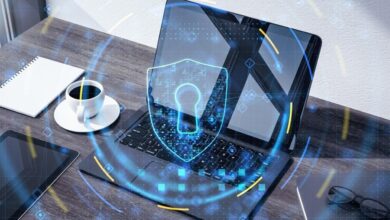How to Create a Productive Virtual Learning Environment at Home

In today’s digital age, the concept of education has transcended the traditional classroom. With the advent of virtual learning, the opportunity to create a productive learning environment at home has become more accessible and vital than ever before. This article will guide you on how to build an effective virtual learning environment, ensuring that learning from home is not just convenient but also highly efficient.
Benefits of a Productive Virtual Learning Environment
A well-structured virtual learning environment offers numerous advantages. It allows for flexible learning schedules, personalized learning experiences, and the comfort of studying from home. This flexibility enables individuals to pursue education alongside their other commitments, making it a popular choice for both students and working professionals.
Setting Up a Dedicated Learning Space
Begin by designating a specific area in your home for learning. Whether it’s a separate room or a corner of your living space, this dedicated area helps establish a clear boundary between work and leisure. A clutter-free, organized, and well-lit space can significantly enhance concentration and productivity.
Read More: How to Invest in Virtual Real Estate
Choosing the Right Technology
Invest in the right technology. A reliable computer, high-speed internet connection, and essential software are crucial for a smooth virtual learning experience. Ensure that your devices are up-to-date, and you have a backup plan in case of technical glitches.
Creating a Schedule and Routine
Establish a daily or weekly schedule that includes dedicated study times. Consistency is key to effective learning. Create a routine that aligns with your natural peak hours of productivity, allowing for efficient knowledge absorption.
Engaging in Interactive Learning
Participate actively in your virtual learning environment. Engage with your instructors and fellow students through discussions, forums, and live sessions. Interactive learning not only fosters a sense of community but also enhances comprehension.
Minimizing Distractions
Identify and eliminate potential distractions. Turn off social media notifications, keep your workspace free of unrelated materials, and communicate with family members about your study hours. Distraction-free learning ensures you get the most out of your virtual education.
Incorporating Physical Activity
Physical activity is essential for maintaining overall well-being. Take regular breaks for short walks, stretching exercises, or even a quick workout. Physical activity rejuvenates the mind and body, allowing you to return to your studies with increased focus.
Emphasizing Self-Discipline
Self-discipline is a cornerstone of successful virtual learning. Set clear goals, prioritize tasks, and manage your time effectively. Avoid procrastination by breaking down your coursework into manageable sections.
Supporting Virtual Learning with Resources
Take advantage of online resources. Utilize e-books, research databases, and online libraries. These digital resources can enhance your virtual learning experience and provide a wealth of information at your fingertips.
Building a Supportive Learning Community
One of the standout features of traditional classrooms is the sense of community and interaction among students. In a virtual learning environment, creating a similar community is not only possible but also highly beneficial.
Leverage Online Forums and Discussion Boards Most virtual learning platforms provide forums or discussion boards for students to interact. Engage in these platforms actively. Post questions, share insights, and offer assistance to fellow learners. These interactions foster a sense of belonging and shared purpose.
Join Study Groups Study groups are a fantastic way to connect with peers. You can form or join virtual study groups with classmates who share your interests or are studying similar subjects. Discussing coursework and solving problems together can enhance comprehension and motivation.
Participate in Live Sessions Many virtual courses offer live sessions or webinars. Attend these sessions whenever possible. They often allow real-time interaction with instructors and fellow students, creating a dynamic learning environment.
Collaborative Projects Collaborative projects are a great way to connect with classmates and work together towards a common goal. These projects can enhance your teamwork and problem-solving skills while providing a sense of community.
Peer Support Reach out to peers for support when you encounter challenges. Sharing your struggles and seeking advice can be a powerful way to overcome obstacles and stay motivated.
Be Respectful and Supportive Treat your fellow learners with respect and kindness. Encourage open discussions and value diverse perspectives. A supportive and inclusive atmosphere is conducive to a healthy learning community.
Share Resources If you come across useful resources or tips, share them with your learning community. This not only helps your peers but also reinforces your own understanding of the subject matter.
Celebrate Achievements Celebrate both personal and community achievements. Acknowledge the successes of your fellow learners, whether it’s acing a test or completing a challenging project. Celebrating these wins fosters a positive and motivating environment.
Seek Help When Needed If you’re facing difficulties, don’t hesitate to seek help within your learning community. Instructors, classmates, and study groups are valuable resources for addressing your concerns and finding solutions.
Monitoring Progress and Adjusting
Regularly assess your progress. Review your assignments, quizzes, and grades to identify areas that need improvement. Adapt your study strategies accordingly to achieve better results.
Ensuring a Healthy Work-Life Balance
Maintain a healthy balance between your academic and personal life. Overloading yourself with coursework can lead to burnout. Setting boundaries and taking time for relaxation is essential for a productive virtual learning experience.
Fostering a Growth Mindset
Embrace a growth mindset. Understand that challenges are opportunities for growth. Develop resilience, persistence, and a positive attitude towards your virtual learning journey.
Read More: How to Learn About new Software Programs
Conclusion
In conclusion, creating a productive virtual learning environment at home is a journey that demands commitment, organization, and the active involvement of various elements. From setting up a dedicated learning space and managing your time effectively to fostering a supportive learning community, all these aspects play crucial roles in your quest for successful virtual learning.
A productive learning space ensures that you have the right atmosphere for focused and efficient study. It sets the stage for discipline and eliminates distractions, helping you stay on track. Moreover, choosing the right technology and resources is paramount to seamless virtual learning. These tools empower you to access a wealth of knowledge and interact with your coursework effectively.
Creating a schedule and routine, engaging in interactive learning, and emphasizing self-discipline are the pillars of effective time management. They help you stay motivated and on top of your coursework. Incorporating physical activity and maintaining a healthy work-life balance are essential for your overall well-being and academic success.
Fostering a growth mindset and monitoring your progress continually will keep you on the path of self-improvement. This mindset shift allows you to approach challenges as opportunities for growth and adapt your strategies for the best results.
FAQs
1. What equipment do I need for a productive virtual learning environment at home?
To create an effective learning environment, you’ll need a reliable computer, high-speed internet, essential software, and a dedicated workspace.
2. How can I stay motivated when learning from home?
Staying motivated involves setting clear goals, creating a routine, and engaging with a supportive learning community. Regularly reviewing your progress can also help maintain motivation.
3. How do I balance virtual learning with other commitments?
Balancing virtual learning with other commitments requires effective time management, clear communication with family and work, and prioritizing tasks.
4. Can virtual learning be as effective as traditional classroom learning?
Virtual learning can be just as effective as traditional classroom learning when the right tools, strategies, and commitment are in place.
5. What are some useful online resources for virtual learning?
Online resources such as e-books, research databases, and online libraries can be valuable assets for virtual learners, offering access to a wealth of information.











